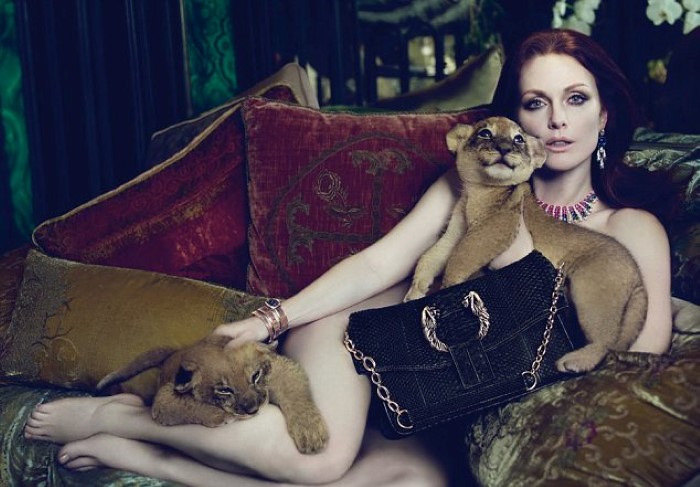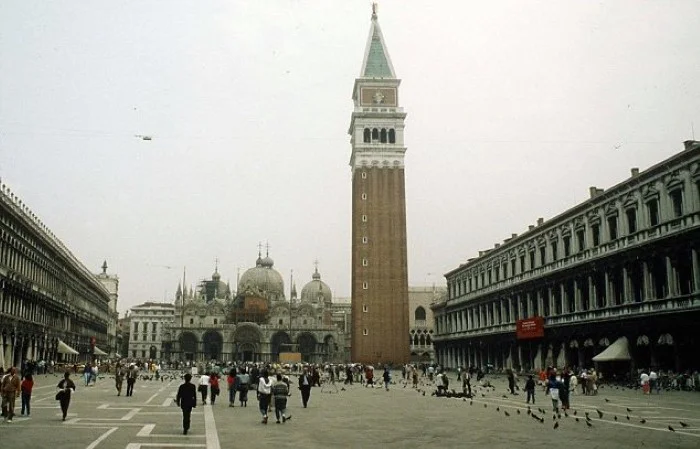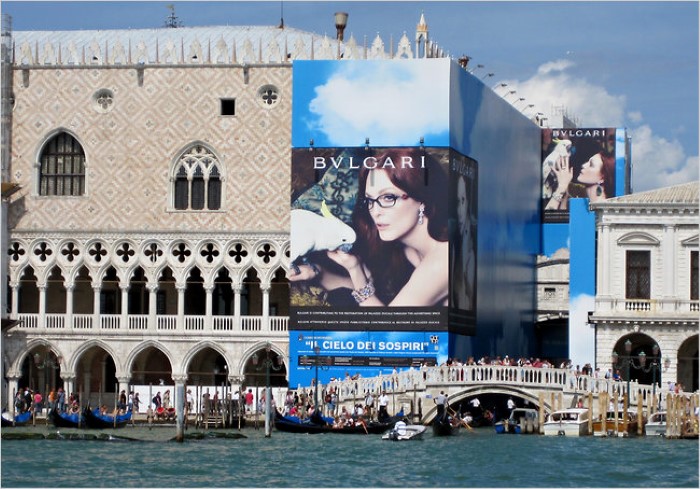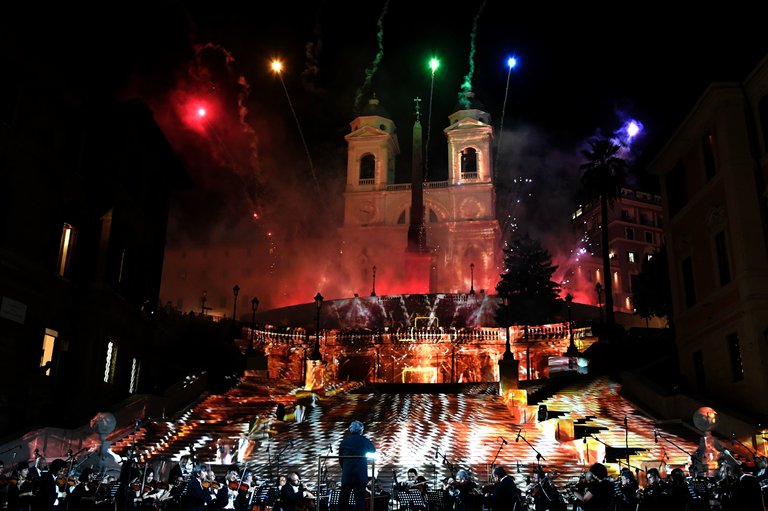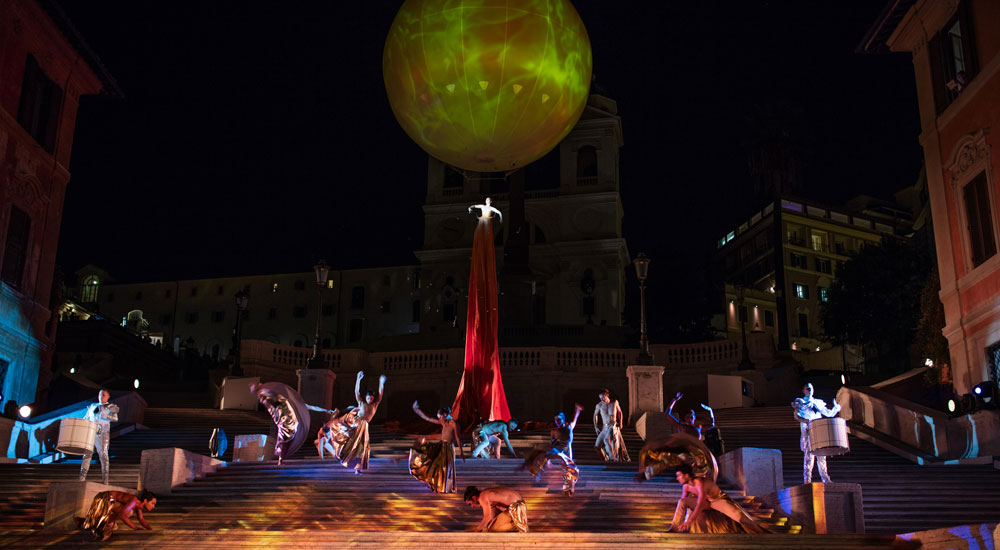Italy's Luxury Brands Lead In Restoring Famous Heritage Sites: Colosseum, Spanish Steps, Rialto Bridge & More
/Reading that Greece had turned down a €2 million subsidy offered by Gucci in exchange for holding a June 2017 event at The Acropolis, we checked into Italy for a long overdue update on the fashion industry's major restorations in the country.
Related: Bulgari to Burgers | italy Faces A Commercial Balancing Act AOC Salon
When Bulgari intended to share a billboard image of Julian Moore overlooking St. Mark's Square, the 2010 protests were mighty.
As a realist, everyone agrees that the ads and sponsorship must exist. Italian government coffers couldn't bail out the restoration of Venice then and even less so now --a fact of life we’ve known for years. Italy has more UNESCO World Heritage Sites than any other country and waiting for government-sponsored funding from either the UN or the Italian government can take years.
In Rome, the southern end of the Circus Maximus opened in November after a seven-year excavation but the remainder of the stadium remains decayed, buried by 2000 years of dirt.
“Ads pay for the restoration of public buildings,” which would not get repaired otherwise, “even though many are a hazard for public safety,” said Renata Codello, the Culture Ministry official responsible for Venice’s monuments (told NYT).
In the years since Moore's scandalous nude big picture images in Venice, fashion's luxury market has become more involved than ever in restoring Italian heritage. It's only natural that Gucci would extend such an offer to Greece.
Recent Bulgari Restorations
In September 2016, Bulgari celebrated a reopened Spanish Steps in Rome, a 10-month cleaning and renovation involving more than 80 restorers and craftspeople and a $1.7 million budget. Built between 1723 and 1726, the staircase that links the Piazza di Spagna to the Piazza Trinità dei Monti has been the backdrop to haute couture fashion shows and featured in iconic films, like William Wyler’s 1953 bittersweet comedy “Roman Holiday.”
“It is our duty to give something back to a city that has made us famous around the world,” Jean-Christophe Babin, Bulgari’s chief executive, said at the reopening event. “For Bulgari, the steps are indissolubly linked to the identity of the maison.” The statement couldn't be more accurate, with the company's flagship store on Via Condotti having a clear, yards away view of the stairs. Knowing that tourists would be disappointed over access to the Spanish Steps, Bulgari used a transparent scaffolding that didn't obstruct the view.
The jewelry house also sponsored the 2015 restoration of ancient mosaics in the Baths of Caracalla (which inspired the jewelry collection “Divas’ Dream”).
The Colosseum Revealed By Tod's
After a 33-month facelift, Rome's famous Colosseum is now a creamy white by day and a rosy pink as the sun sets. Never cleaned in 2,000 years, the famous landmark is no longer tobacco yellow. In an act of modern-day cultural patronage, Tod's company founder Diego Della Valle responded to a government call to the private sector to take the lead in the restoration of one of Italy's most famous historic sites. And he made the 25 million euros commitment before a new Italian law took effect in late 2014, giving modern-day versions of Medici princes of the arts huge tax breaks. Under that new strategy, more than 100 million euros ($112 million) have been donated, Italy's Culture Minister Dario Franceschini said.
Inspired by the results of the restoration, the Italian government found 18 million euros ($20 million) to replace, by the end of 2018, the arena's long vanished floor with one that could support modern-day entertainment, although monument-rocking rock concerts have been ruled out. Architects and engineers must determine that the 2,000 year old foundations can support a new stage Surely a fashion brand or two will use the famous space with a generous donation as Gucci was prepared to make in Greece.
Architect Gisella Capponi, who directed the restoration, says the cleaning allows the Colosseum's creamy hues of travertine stone to be appreciated again. "The coloration highlights the monument" while the dirt and grime "gave an image of being more a ruin than it really is," she said.
Fendi Restores Trevi Fountain
Rome's Trevi Fountain reopened to the public in November 2015, with a $2.2 million restoration funded by Fendi. “It’s very emotional, especially for us Romans,” the luxury brand’s designer Silvia Venturini Fendi, told AFP at the reopening of the famous site. Fendi CEO Pietro Beccari agreed to fund the restoration as a “gesture of love” to Rome.
In July 2016, Fendi celebrated its 90th anniversary with a fashion show at the Trevi Fountain. The sumptuous luxury brand with a special focus on fur has committed to restoring four other fountains in Rome: including the 16th-century Moses fountain on the Quirinale hill; The Fontana dell’Acqua Paola al Gianicolo, also known as the 'Fontanone' and recently seen in the Academy Award-winning film 'The Great Beauty.'
“There are a lot of people who thought, ‘Oh, we cannot have rich billionaires paying with his money or her money to restore our antiquities,’” Ignazio Marino, the mayor of Rome, told the New York Times. “I took a completely opposite approach: ‘Look for the money where the money is.’”
Marino ruffled feathers in 2014 by renting the Circus Maximus for a Rolling Stone concert.
Florence's Uffizi Gallery has renovated eight rooms containing its 15th-century collection with support from Ferragamo. This is not Ferragamo's first historic restoration project - with previous endeavors including the restoration of the Santa Trinita church, near the company's Palazzo Spini Feroni in Via Tornabuoni, and the Column of Justice sculpture in the city's Piazza Santa Trinita.
Slightly more money was raised by the Washington-based Friends of Florence with a $910,000 grant to the Uffizi Gallerythat allowed a significant upgrade of the Botticelli Room, now split into a two-room presentation.
Prada & Versace Team Up In Milan
In Milan, Prada and Versace split the 3 million euros cost of a facelift for the city's Galleria Vittorio Emanuelle II. Having been there many times, we can attest to the fact that it's unrecognizable in its revived state.
Returning to Venice, the scaffolding is no more on the Rialto Bridge. Another major restoration, the $5.3 million Rialto project was sponsored by OTB Group, the parent company of Marni, Diesel, Maison Margiela and Viktor & Rolf, who did insist that ads for their brands appear on the scaffolding during the May 2015 Venice Biennale. Pundits and Venetians alike were infuriated.
Overall, though, the branding has been minor on the restorations, with discretion being the prevailing norm from fashion luxury companies. Through this public/private partnership restorations that would have been inconceivable -- given Italy's rocky economy, budget woes and immigrant crisis -- are breathing a new vibrancy into its critical tourist business.

